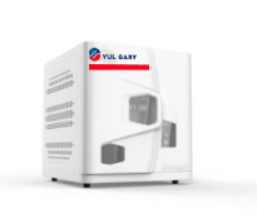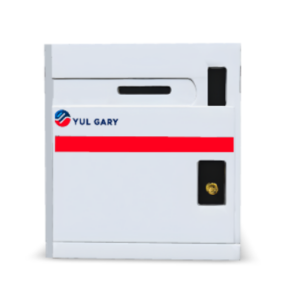Description
The YG1798 and YG1799 Total Organic Carbon Analyzers represent a breakthrough in water purity testing with their state-of-the-art UV catalytic oxidation technology which ensures ultra-sensitive detection from 0.001 to 1.500 mg/L. These innovative analyzers are engineered to provide precise Total Organic Carbon (TOC) monitoring without the need for hazardous chemicals, promising a more environmentally friendly and safer operation. Their user-friendly 7-inch touchscreen interface, combined with compliance to FDA-21 CFR Part 11 and USP32-643 regulatory requirements, make them an ideal choice for laboratories and facilities aiming for superior water quality control.
Market Price
When exploring the market for professional lab equipment like TOC analyzers, one might expect a price range that reflects their advanced capabilities. Typically, the cost for equipment of this caliber hovers within the mid-to-high range, generally between $16,500 and $17,400. This investment ensures exceptional value for pharmaceutical, microelectronics, and water treatment facilities where precise and reliable TOC monitoring is essential.
Frequently Asked Questions
- What’s the difference between the YG1798 and YG1799 models? The YG1799 model includes both online and offline sampling capabilities, while the YG1798 is designed for offline use only.
- How does UV oxidation compare to traditional persulfate methods? UV oxidation is free from hazardous chemicals, enhancing operator safety and reducing maintenance costs by up to 60% compared to traditional methods.
- Can these analyzers be used for continuous monitoring? Yes, especially the YG1799 model which supports continuous online monitoring with a response time of 10 minutes.
Advantages and Disadvantages
Advantages
- Regulatory Compliant – Meets essential FDA and USP requirements for validation.
- Ultra-Sensitive Detection – Capable of detecting levels as low as 1ppb, ideal for ultra-pure water applications.
- Safe Operation – No hazardous chemicals are needed, enhancing operator safety.
Disadvantages
- Limited Range – Best suited for low-TOC waters (<1.5ppm).
- Initial Investment – Costs more than basic TOC analyzers.
- Temperature Sensitivity – Requires stable laboratory conditions (±5℃/day).
Product Use in the Field
The YG1798 and YG1799 analyzers are expertly designed for use in various sectors. They are particularly beneficial in pharmaceutical water systems, such as Water for Injection (WFI) and purified water, microelectronics for ultrapure water monitoring, beverage production quality control, and municipal water treatment facilities. The YG1799’s capability for 24/7 online monitoring makes it indispensable for continuous oversight in pharmaceutical settings, while its compact design allows for cleanroom installations.
Recommendations
To ensure optimal performance and longevity of the YG1798/YG1799 TOC Analyzers, it is advised to adhere to the following recommendations: calibrate the device monthly for critical applications, utilize the optional autosampler for processing multiple samples efficiently, maintain a stable laboratory temperature for consistent results, regularly export data via USB for backup, and schedule an annual replacement of the UV lamp.
Features
- Ultra-sensitive detection range from 0.001 to 1.500 mg/L (1ppb limit)
- UV catalytic oxidation for chemical-free operation
- 7-inch touchscreen interface for intuitive use
- Compliance with FDA-21 CFR Part 11 and USP32-643
- Dual-mode operation with online and offline sampling (YG1799)
- 3-minute rapid analysis with ±5% accuracy
- 8GB data storage featuring complete traceability
- Bluetooth printing capabilities
- Modular design facilitating easy maintenance
Technical Specifications
| Model | YG1798 | YG1799 |
| Detection range | 0.001-1.500mg/l (ppm) | |
| Detection limit | 1ppb | |
| Max tolerance | ±5% | |
| Analysis time | 3 min | |
| Response time | within 10 min | |
| Sample temperature | 1-95℃ | |
| Environment temperature | 10-40℃ with temperature change ±5 ℃/d | |
| Sample flow speed | 3ml/min | |
| Relative humidity | ≤85% | |
| Repeatability tolerance | ≤3% | |
| Drifting | ±5% | |
| Power Supply | AC 220V,50/60Hz or AC 110V | |
| Frequency | 50/60Hz | |
| Rated Power | 100W | |
| Dimension | 440*220*300mm | |





